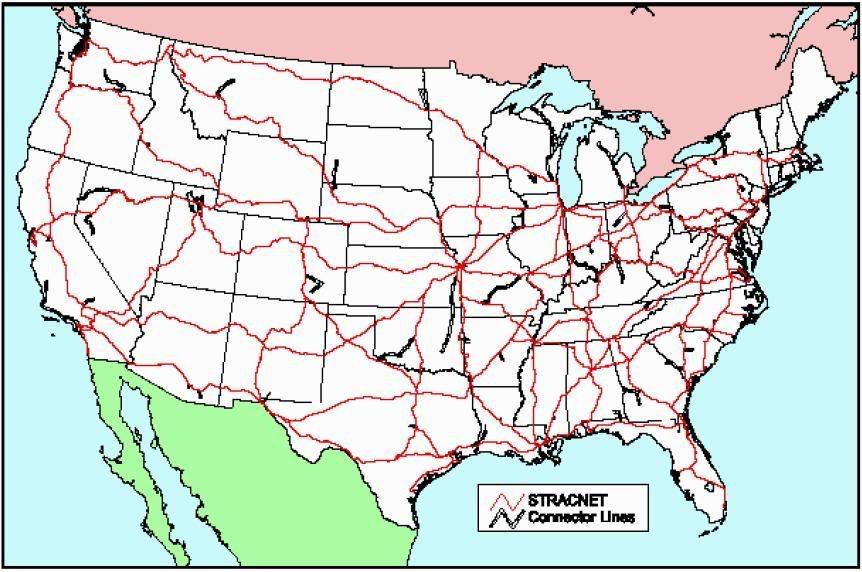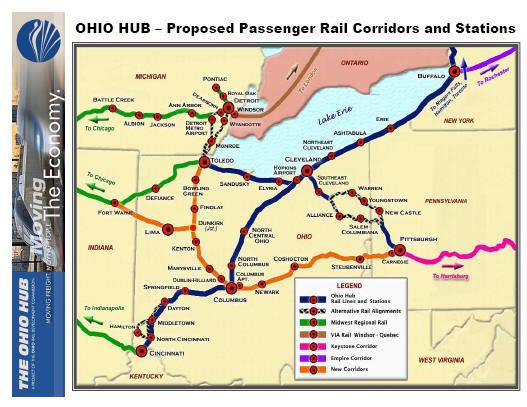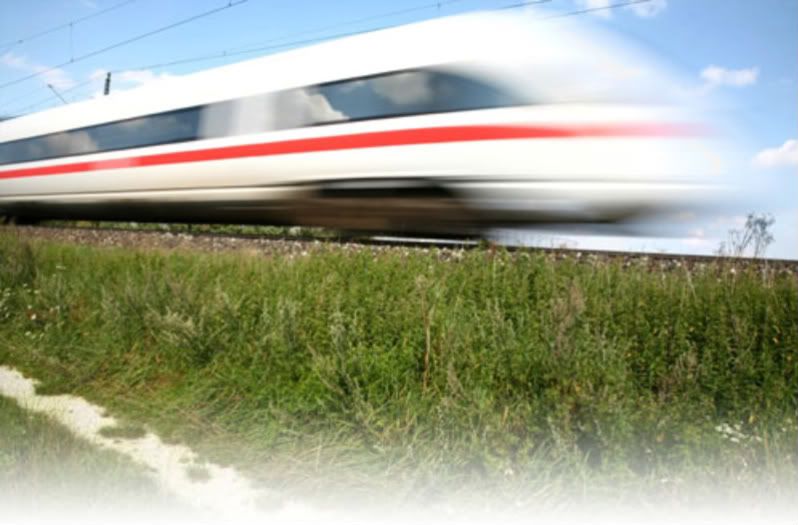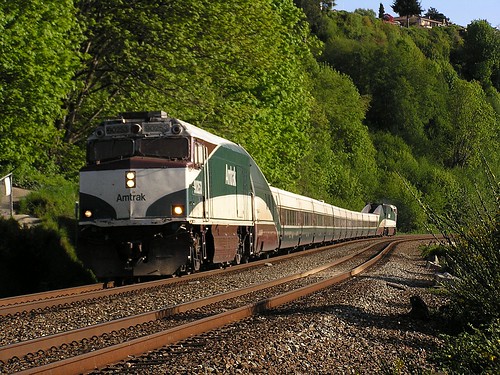Burning the Midnight Oil for Living Energy Independence
 Last year, I told VP Joe Biden about the Sustainable Electric High(er) Speed Rail I wanted for Christmas (cf. links below). It involved electrifying the 30,000+ miles of STRACNET, and establishing 100mph Rapid Freight Rail paths, including support for running 110mph or 125mph long haul electric passenger services on the Rapid Freight paths.
Last year, I told VP Joe Biden about the Sustainable Electric High(er) Speed Rail I wanted for Christmas (cf. links below). It involved electrifying the 30,000+ miles of STRACNET, and establishing 100mph Rapid Freight Rail paths, including support for running 110mph or 125mph long haul electric passenger services on the Rapid Freight paths.
In short, I wanted Joe Biden to take Alan Drake’s plan and just fracking DO it.
I didn’t get it for Christmas last year – but then, I guess he was only VP-elect last 25DEC08. The post today is to look at the progress toward the goal. The answer, surprisingly, is that we have made substantial progress. Certainly we are not halfway there, yet, but we are much further along than I expected to see.

 The
The  One of the stories that came out into the press this week was the pledge by the US Department of Transport to look into
One of the stories that came out into the press this week was the pledge by the US Department of Transport to look into  Let construction or upgrade of a rail corridor be proposed, and almost immediately the cry goes up, “but we can’t afford it! It costs too much!”.
Let construction or upgrade of a rail corridor be proposed, and almost immediately the cry goes up, “but we can’t afford it! It costs too much!”. crossposted from
crossposted from  Today, the focus is on one lovely rhetorical ploy used by anti-rail advocates to try to put one over on people with limited experience with trains. This relies on the false framing that “trains is trains”, and uses something that is true about a particular kind of local rail transport to mislead people about 110mph Emerging High Speed Rail in particular.
Today, the focus is on one lovely rhetorical ploy used by anti-rail advocates to try to put one over on people with limited experience with trains. This relies on the false framing that “trains is trains”, and uses something that is true about a particular kind of local rail transport to mislead people about 110mph Emerging High Speed Rail in particular. The people’s choice award in the
The people’s choice award in the  On Thursday,
On Thursday,  I have blogged on this topic before (links below the fold), and the concept is both powerful and simple. Electrify main rail corridors and provide the capacity to support 100mph Rapid Freight Rail. The points are direct:
I have blogged on this topic before (links below the fold), and the concept is both powerful and simple. Electrify main rail corridors and provide the capacity to support 100mph Rapid Freight Rail. The points are direct: It is widely remarked that the US Department of Transport map of High Speed Rail Corridors leaves a lot of obvious holes.
It is widely remarked that the US Department of Transport map of High Speed Rail Corridors leaves a lot of obvious holes. Freakonomist Eric Morris finishes up his tag-team attack with Ed Glaeser on the HSR policy with a post that confesses to the hack jobs both are doing on HSR policy – but works hard to spin the confession into a defense of the hackery.
Freakonomist Eric Morris finishes up his tag-team attack with Ed Glaeser on the HSR policy with a post that confesses to the hack jobs both are doing on HSR policy – but works hard to spin the confession into a defense of the hackery. … A Four Step Program
… A Four Step Program